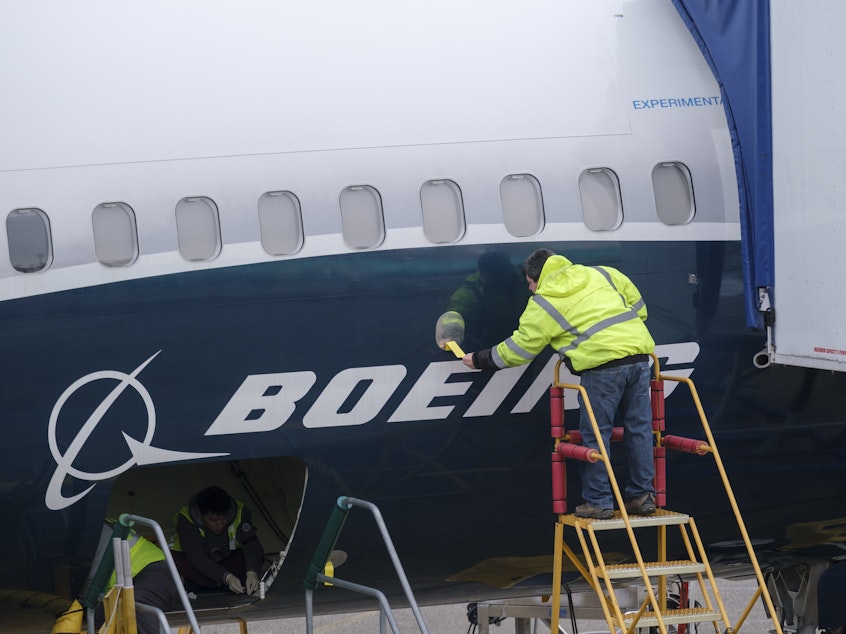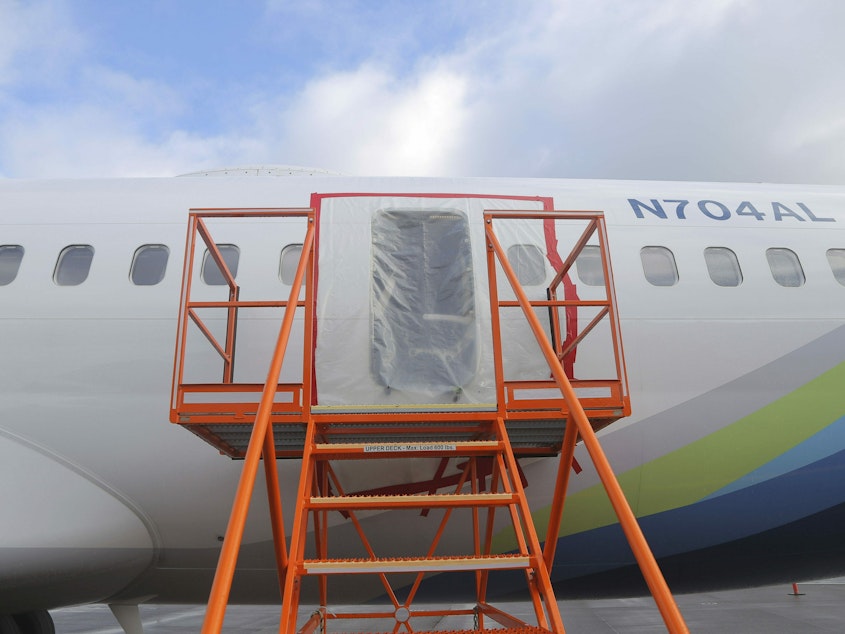FAA launches investigation into Boeing after in-flight blowout

The Federal Aviation Administration is formally investigating Boeing over an incident Friday in which a piece of a 737 Max 9 flew off in-flight.
The FAA said Thursday it is looking into whether Boeing failed to ensure the aircraft conformed with its design standards and federal regulations.
“This incident should have never happened, and it cannot happen again,” FAA said in a statement.
Following the blowout, the FAA grounded all 737 Max 9 jets that have the same feature that malfunctioned. The piece of fuselage that detached from the plane is designed to plug a hole for an optional exit door. After the incident, Alaska Airlines and United said they found loose hardware associated with the door plug on other jets.
“We will cooperate fully and transparently with the FAA and the NTSB on their investigations," Boeing said in a statement posted online Thursday. The Renton-based company also referenced comments CEO Dave Calhoun made during a recent all-hands meeting.
“We’re going to approach it with 100% complete transparency every step of the way," he said.
Sponsored

Shortly after Alaska flight 1282 took off from Portland, Oregon, the door plug detached leaving a refrigerator-sized hole in the plane. The Alaska crew managed to return to Portland without serious harm to passengers, thanks largely to the fact that the flight had not yet reached its cruising altitude.
"My first reaction was this is gonna be huge," said Christine Negroni, an aviation expert and author of The Crash Detectives: Investigating the World's Most Mysterious Air Disasters.
"I did not envision at that time that the FAA would be today conducting an investigation into whether Boeing was actually meeting its regulatory obligations in the manufacturer and design of this airplane," she said.
The local aviation industry is still reeling from the harrowing incident. Seattle-based Alaska has canceled all trips scheduled on 737 Max 9 jets, amounting to more than 100 flights a day. An Alaska spokesperson said the airline has canceled over 870 flights as of Thursday.
Sponsored
Boeing meanwhile has seen its share price tumble and faces an uphill battle to regain the public’s trust.
The FAA said Thursday that that safety, not speed, will determine when the 737 Max 9 will be authorized to fly again.
"Ultimately this decision rests in the hands of the FAA, so here we are," Negroni said. "We have an airplane that's been grounded. We have airlines that don't know when they're going to get their airplanes back, passengers being inconvenienced all over the world, and the FAA is learning things that make them believe it's a bigger issue."




